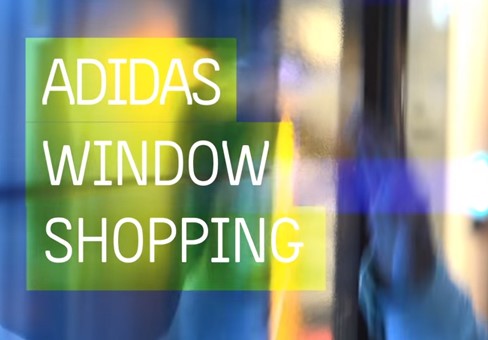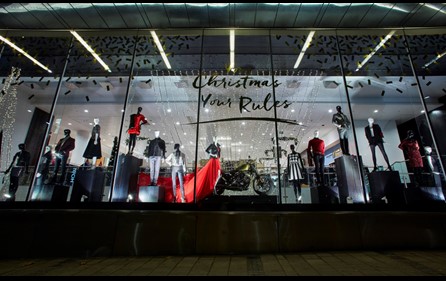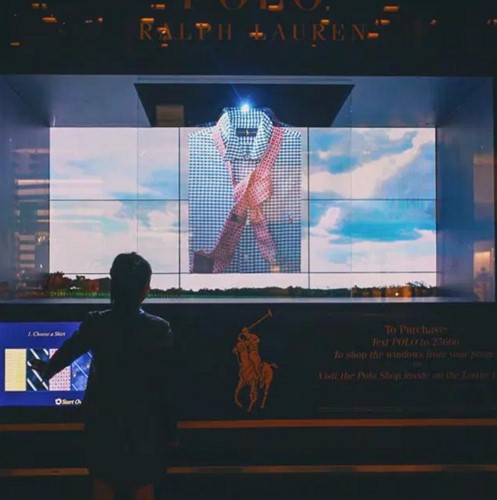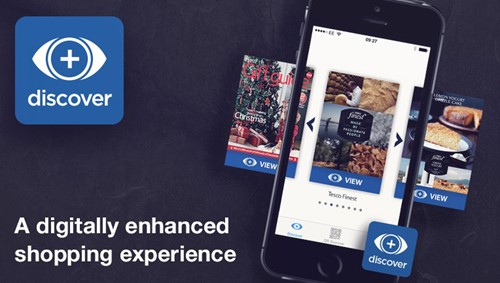Forget window shopping, think shoppable windows
Author: CIMCOM
 Not long ago, window shopping meant browsing store windows to see what was on offer without any intention to buy. Now shrewd merchandisers and e-commerce marketers are designing their shop windows to encourage buying online. Now, when the shop is shut or you’re in a rush, you can order from your mobile as more retailers make it easy to buy what you see directly from the window. It’s all part of a move towards providing alternative shopping routes and blending traditional retail and e-commerce channels. House of Fraser, Adidas, Bloomingdales and Tesco have all tried shoppable windows, but their approaches are very different.
Not long ago, window shopping meant browsing store windows to see what was on offer without any intention to buy. Now shrewd merchandisers and e-commerce marketers are designing their shop windows to encourage buying online. Now, when the shop is shut or you’re in a rush, you can order from your mobile as more retailers make it easy to buy what you see directly from the window. It’s all part of a move towards providing alternative shopping routes and blending traditional retail and e-commerce channels. House of Fraser, Adidas, Bloomingdales and Tesco have all tried shoppable windows, but their approaches are very different.
House of Fraser links shop window to sales via app
 Department store House of Fraser installed its shoppable window capability to address the customer experience of shopping on Black Friday when many products are heavily discounted. The window used augmented reality technology, which allowed customers with the brand’s app to access a full list of the store’s Black Friday deals by scanning scan a vinyl shape in the window. Customers were then able to make a transaction on their mobiles, avoiding the queues and then simply collect their goods, hassle-free in-store.
Department store House of Fraser installed its shoppable window capability to address the customer experience of shopping on Black Friday when many products are heavily discounted. The window used augmented reality technology, which allowed customers with the brand’s app to access a full list of the store’s Black Friday deals by scanning scan a vinyl shape in the window. Customers were then able to make a transaction on their mobiles, avoiding the queues and then simply collect their goods, hassle-free in-store.
To provide an extra enticement for customers to trial the shoppable window, everyone who used it was included in a competition to win a £250 gift card.
Results cement shoppable windows as a permanent feature
- The success of the Black Friday trial mean that shoppable windows at House of Fraser are here to stay.
- The first product line to feature will be the brand’s premium collection, The House Edit.
- The windows will satisfy the customers desire to see product information without the need to go in-store.
- This development allows the retailer’s shops to be open when they are shut.
- It’s also viewed as a means to connect the online and the offline world and generate sales competitively between the two.
Adidas connects shoppable window with smartphones via PIN
Adidas, the German-based sports clothing brand created shoppable windows to support the launch of its youth brand, Neo. Its target customers are comfortable with smart phone technology. The challenge was to optimise the use of window space and simplify the e-commerce path for consumers on the move.
To ensure a smooth customer experience the brand considered the mobile environment. It side-stepped the need for apps, QR codes or registrations. It also took account of the busy street environment which dictated that consumers wouldn’t want to be entering sensitive personal information where passers-by might see. A huge touchscreen allowed people to browse Neo products, try products on life-size models, move the models (who were dancers) to do cool things and to buy products. By visiting a short web address on their smartphone and tapping in a one-off PIN number, the shopper could connect their mobile to the shopping kart on the window. Shoppers could also share their favourite items via social networks.
Results created sales but in-store too
- The concept was tested in the small German town of Nuremberg.
- Around 7,600 people interacted with the shoppable window over 6 weeks.
- 90% of people stopped to look whenever someone interacted with the window.
- 25% of those playing with the window went into the shop.
- Out of hours the window generated e-commerce conversions.
- Counter-intuitively, the big win for the brand was in creating a buzz in the street and pulling customers into the store.
- The technology was viewed as a means to gamify the customer experience.
View the backgrounder on the initiative: DSE 2014 Apex Nominee – The Integer Group for Adidas
In rolling out the pilot, the brand provided customers with the option either to use a web address or scan a QR code, before inputting a unique PIN. Having done this, the store’s shopping kart appears on the smartphone screen complete with selected products.
Bloomingdales interactive windows and text to buy
 In the USA, Bloomingdale’s Manhattan store launched its shop-on-the-go touchscreen. The shoppable window was designed to attract passers-by and convert them to customers. Six interactive windows displayed Ralph Lauren clothing as part of a Father’s Day promotion.
In the USA, Bloomingdale’s Manhattan store launched its shop-on-the-go touchscreen. The shoppable window was designed to attract passers-by and convert them to customers. Six interactive windows displayed Ralph Lauren clothing as part of a Father’s Day promotion.
The display was developed to provide street theatre, with an experience that would make shoppers stop and take notice. People could browse colour swatches on touchscreens to generate products – shirt, tie or trousers – in the same colour, visible in the window. To buy, customers could text “Polo” for a link to the e-commerce checkout page.
The experience also aimed to be responsive with shoppers having the ability to have their purchase delivered to them on the pavement.
Results build the brand experience
- The shoppable window provided customers with an exciting brand experience for both the clothing brand, Ralph Lauren, and the retailer, Bloomingdales.
- Its immediacy enabled customers to make impulse purchases, with clothing hand-delivered to them without the need to step inside the department store.
Tesco Metro augmented reality windows with QR codes
 UK supermarket brand Tesco installed QR codes together with augmented reality technology in just under a dozen Metro stores. The initiative enabled passers-by to browse, order and pay for products via their mobiles from outside the shop as part of a Christmas promotion.
UK supermarket brand Tesco installed QR codes together with augmented reality technology in just under a dozen Metro stores. The initiative enabled passers-by to browse, order and pay for products via their mobiles from outside the shop as part of a Christmas promotion.
The technology allowed customers to find out more about the Christmas gifts displayed in the virtual shop window. Customers can scan the QR code to see more of the product on their smartphone, with the ability to click and collect from the shop within 24 hours.
Resulting in customer immersion
- Customers that are comfortable with smartphone technology become immersed in the brand experience with augmented reality apps.
- Tesco has implemented augmented reality across publishing, products and in-store with its ‘Tesco Discover’ app that’s achieved 100,000 downloads.
- Customers can now scan products labels, magazines or point of sale to access rich data e.g. on provenance, interact with editorial features and buy goods.
- Augmented reality has also been use for gamification of its Big Night In content.
- An average clickthrough rate of 15% has been realised.
For Tesco the focus is on providing an enhanced shopping experience enabled via mobiles.